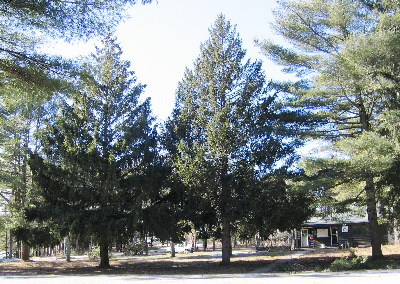
Spruces planted at headquarters. Myles Standish State Forest, Carver
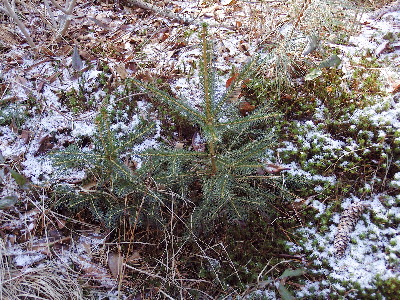
Young spruce saplings near old plantation. Myles Standish State Forest, Carver
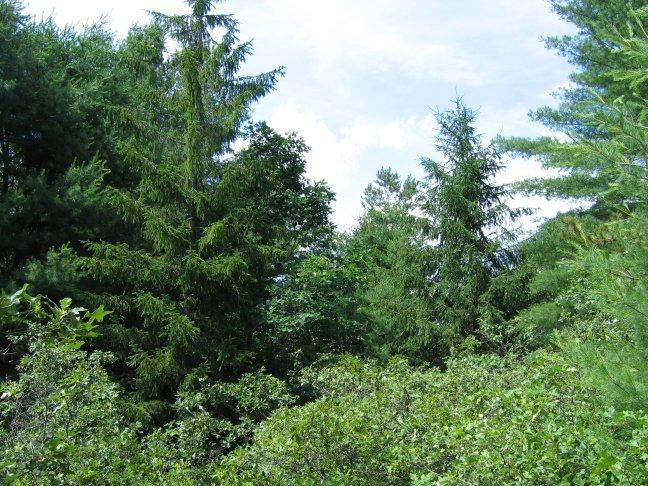
Expanding grove. Myles Standish State Forest, Plymouth
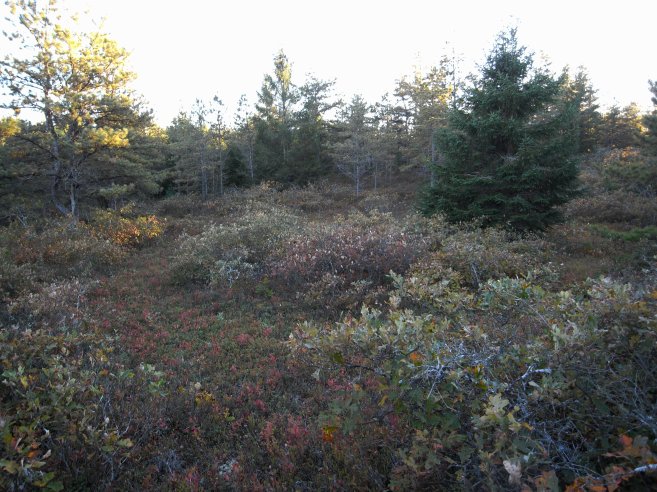
Norway spruce in a frost pocket. MSSF, Plymouth
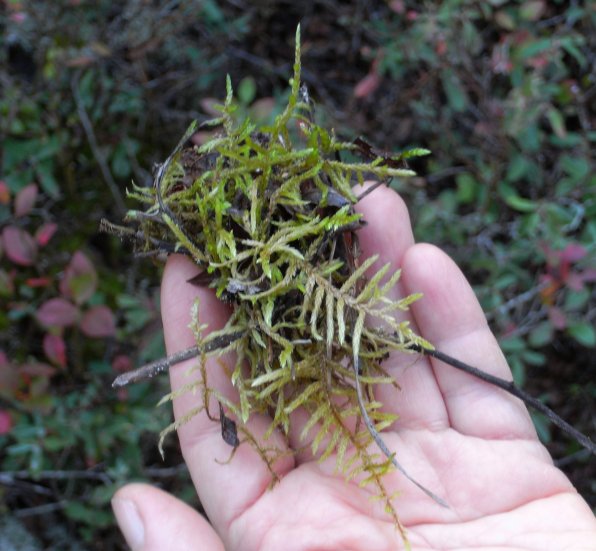
Pleurozium schreberi, a typical moss of boreal conifer forests, follows Norway spruce, wherever the spruce settles
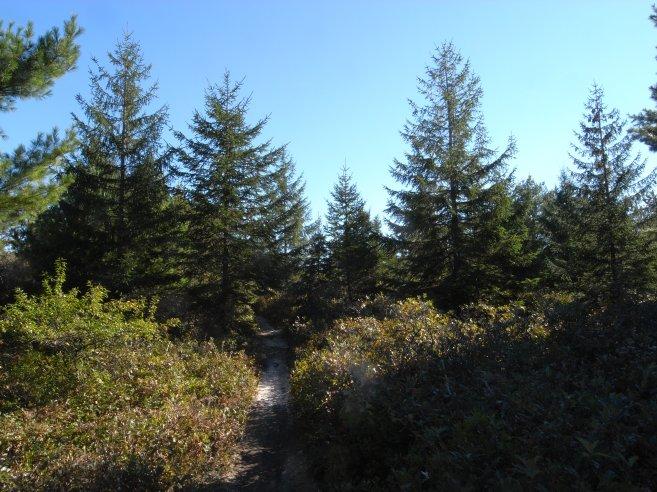
A frost pocket developing into spruce forest. MSSF, Plymouth
Norway spruce:
Yet another invasive tree in New England
Alexey Zinovjev, Irina Kadis
Norway spruce (Picea abies) is an alien tree from Europe traditionally cultivated
in American cities and deliberately introduced to natural habitats.
According to the US Forest Service, it has been widely introduced to the Northeast, Pacific Coast, Rocky Mountain States,
as well as southeastern Canada. It is now fully naturalized in the eastern US from Connecticut to Michigan, including New England.
Around Boston, one can find old planted spruces literally at every reservation/park headquarters
as well as entire spruce plantations in parks. It has been expanding from these foreposts, successfully reproducing by seed, and
gradually displacing native plant communities.
Scattered young Norway spruces have recently become a common view in many reservations, for example, in Stony Brook Reservation.
In order to produce seed, Norway spruce needs full light, so cones are
usually found either high up on tops of tall spruces or at grove margins.
Seed are mostly dispersed during the wintertime, drifting with the wind,
in some instances capable of overcoming large distances across the
sturdy snow crust. However, more often seed don't drift that far—only
up to 60 m, according to some assessments.
The expansion of groves is a rather slow, inconspicuous process. Usually
young spruces form a continuous front around source trees. Spruce
seedlings and saplings are extremely shade tolerant, indeed shade
loving, thus capable of growing under a canopy of other trees. Over the
years, they become tall (up to 55 m = 180 ft), overgrowing and
displacing those trees that once gave them shelter.
As soon as Norway spruce takes over, very few plants can tolerate the newly formed habitat.
Because spruce foliage is very shade tolerant, each needle on a growing spruce branch survives for 4-5 years deep inside the crown
(as compared to only 2 years in sun-loving pines). Thus a very dense, shady canopy is formed in every spruce forest.
At the same time, the soil becomes highly acidic and devoid of nutrients in the surface horizon due
to a particular chemical process called leaching, which results in forming a special soil
type: podsol or spodosol.
It is mostly green mosses that can survive in the environment of
well developed Norway spruce stands. These are typical northern conifer forest (taiga) dominants--same
exact species that dominate Canadian as well as north European conifer forests, for example, Hylocomium splendens or
Pleurozium schreberi. No tree from Massachusetts known to us can share dominance with Norway spruce:
the spruce appears to always form single-species stands.
Luckily, Norway spruce, a boreal species, generally does not have much spreading potential in
southeastern Massachusetts due to warm summers with frequent late-summer/fall droughts. Yet
there is at least one habitat here, which has been serving refuge for Norway spruce:
pine barren frost pockets
(or frost bottoms). These are small and large open, tundra-like depressions that have
developed their unique herbaceous and low-shrub vegetation and flora due to accumulating cold air,
which restricts growth of many plants, and most of all, native pines and other trees.
However,
Norway spruce is not a kind of tree that could be restricted by a couple cool nights in spring! With
their windless, cool microclimate and dense shrub cover, frost pockets indeed have proved to be the
best possible habitat for the alien northern tree introduced to the forest surrounding the pockets
(Myles Standish State Forest). Finding a very favorable microclimate situation for their
development, Norway spruce seedlings easily conquer open and protected frost pockets.
Young spruces first grow there very slowly in the dense shade of scrub oaks, maintaining a low
profile perhaps for decades—a typical Norway spruce strategy well-known in its native Europe!
Finally, there comes the time when spruces overgrow all other plants, so that upon descending to a
former frost pocket, one finds itself in
a young grove of Norway spruce. Before long, the ground is covered with
spruce satellite mosses, and young trees start producing cones. Thus the expansion
proceeds to the next phase.
Frost pockets of southeastern Massachusetts are a rare, vulnerable habitat, now experiencing all
kinds of threats. As hilly areas free of trees, frost pockets are favored by illegal off-road motor-
bikers, who criscross them with multiple trails; frost pockets are a first choice of any power line
company when it comes to developing the right of way across the forest; but the menace coming
along with the human-induced plant succession is yet to be recognized!
Because Norway spruce expansion is such a gradual process and also because young spruces
look so innocent and attractive, it is easy to underestimate the amount of damage this tree
inflicts on native American plants. Despite warnings and more and more evidence of Norway spruce's
aggressive nature, it is not yet included on the Invasive Plant List for New England.
-
U.S. National Parks where Norway spruce has been reported invasive:
Great Smoky Mountains National Park (North Carolina & Tennessee)
Haleakala National Park (Hawaii)
Monocacy National Battlefield Park (Maryland)
http://www.invasive.org/weedus/subject.html?sub=3386
- Norway spruce invasion in the alpine meadows of Central Europe:
Martin Dovčiak, Richard Hrivnák, Karol Ujházy and Dušan Gömöry. 2008.
Seed rain and environmental controls on invasion of Picea abies into
grassland. Plant Ecology. 194 (1): 135-148 Abstract at:
http://www.springerlink.com/content/x45765p741653508/
Alexey Zinovjev, Irina Kadis
1 February — 24 October 2010
|



